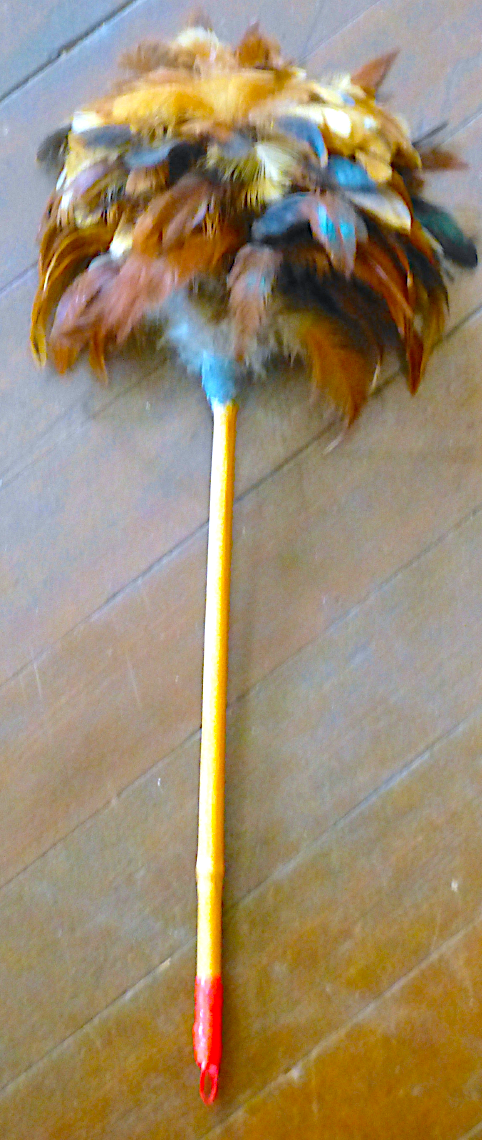Feather Duster
Although it seems like an intuitive solution to a household problem that has existed since the dawn of house-holding, the feather duster is a surprisingly modern invention.
Considered a symbol of status and refinement in the late nineteenth and early twentieth century in European and American homes, the original idea for the feather duster was conceived in a broom factory in Jones County, Iowa, in 1870, when a farmer brought a bundle of turkey feathers into the factory asking if they could be used to assemble a brush. The factory owner, E.E. Hoag, used these feathers to invent the first feather duster using a short broom stick and splitting the feathers with a pocket knife. The duster was found to be too stiff for use, but in 1874 the Hoag Duster Company was founded, which became a pioneer of feather duster production. Hoag's claim to intellectual ownership of the duster, however, was hotly contested by Susan Hibbard of Lake Geneva, Wisconsin, who in 1874 used discarded turkey feathers to invent a feather duster of her own, and promptly filed for a patent. After a hard-fought legal battle against her husband and the National Feather Duster Company, in December 1881 Hibbard was granted priority of invention of the feather duster.
Ostrich feather dusters, today the most familiar variety, were developed in 1903 in Johannesburg, South Africa by missionary and broom factory manager Harry S. Beckner, who felt ostrich feathers made a convenient tool for cleaning up the machines at the broom factory. Beckner and his brother went on to form he first ostrich feather duster company in the United States in 1913 by in Athol, Massachusetts and has survived till this day as the Beckner Feather Duster Company.
Chicken feathers, bamboo, twine; 42 x 15cm.
Nelson South East Asia Collection © 2025
